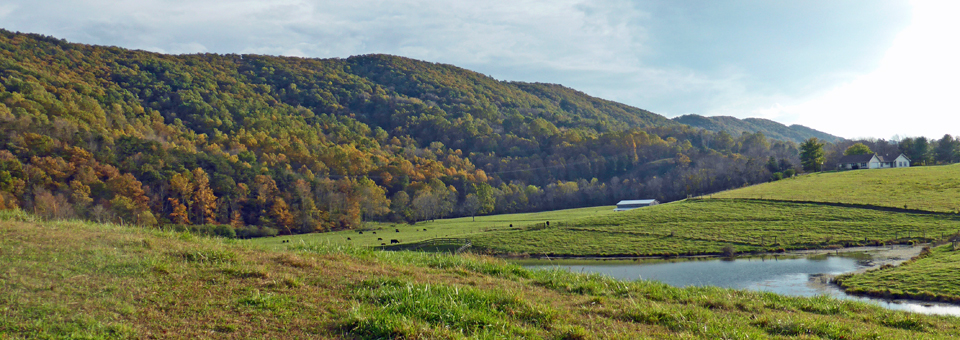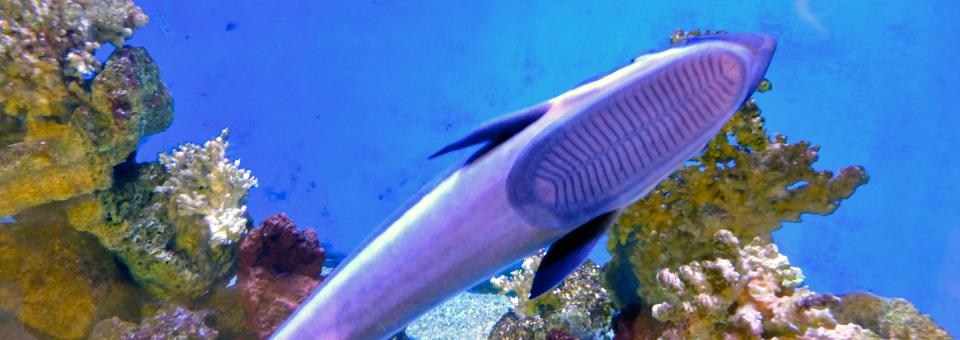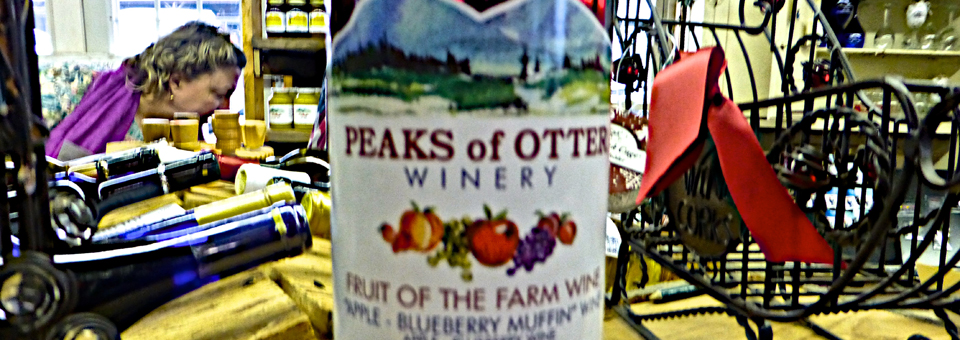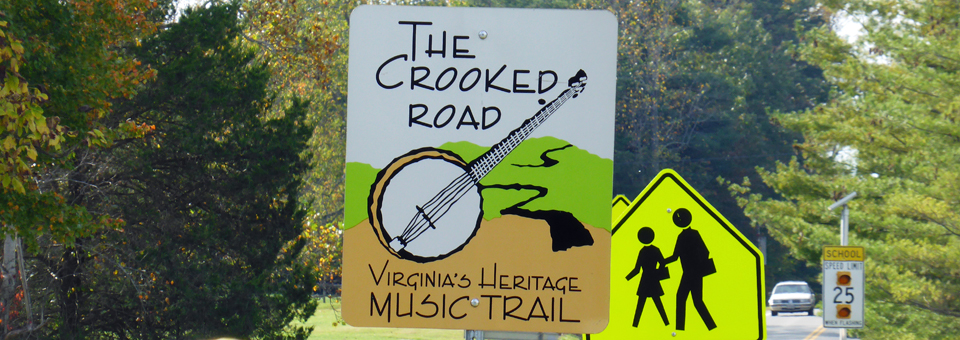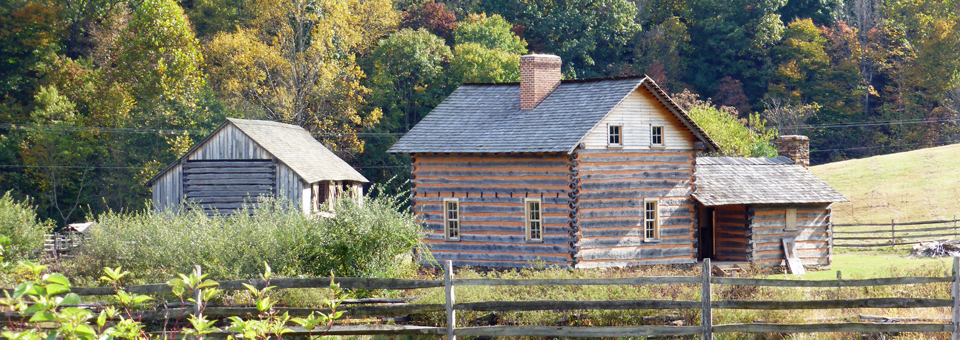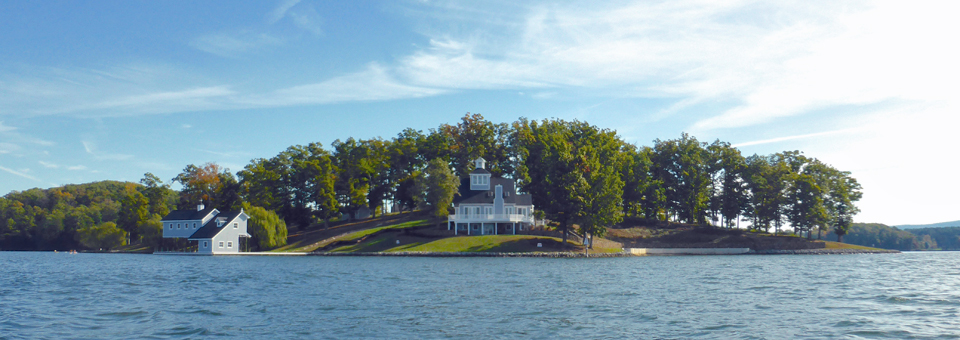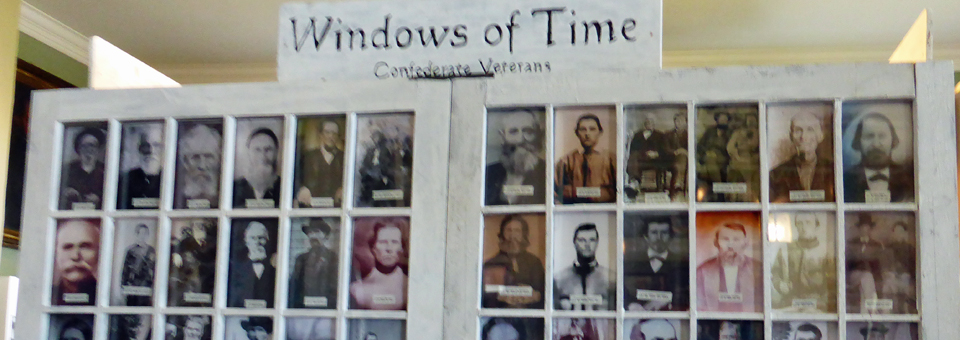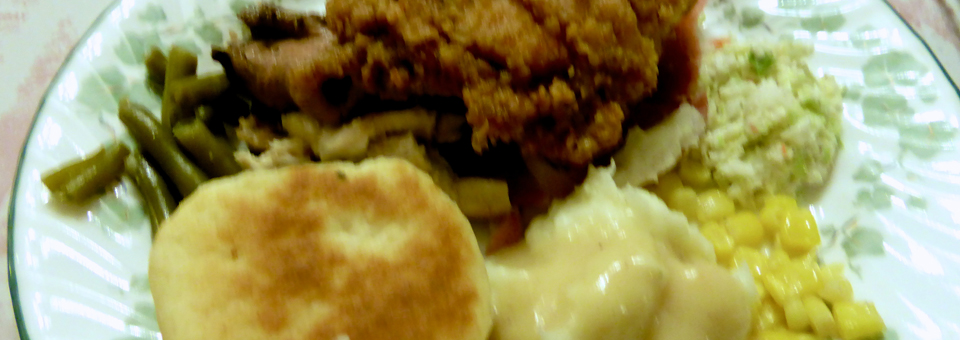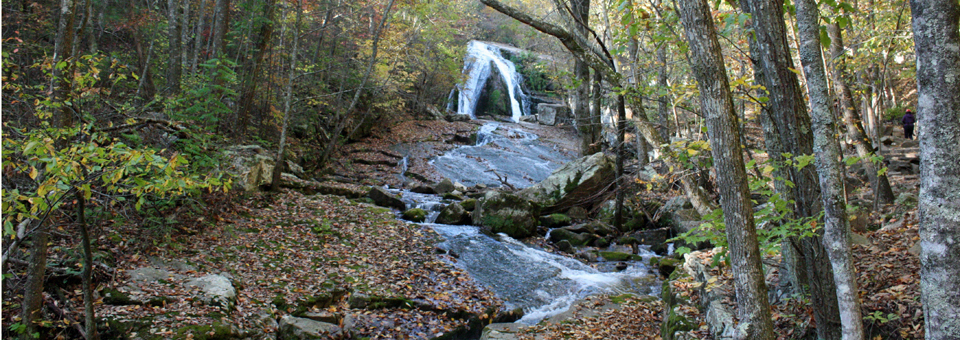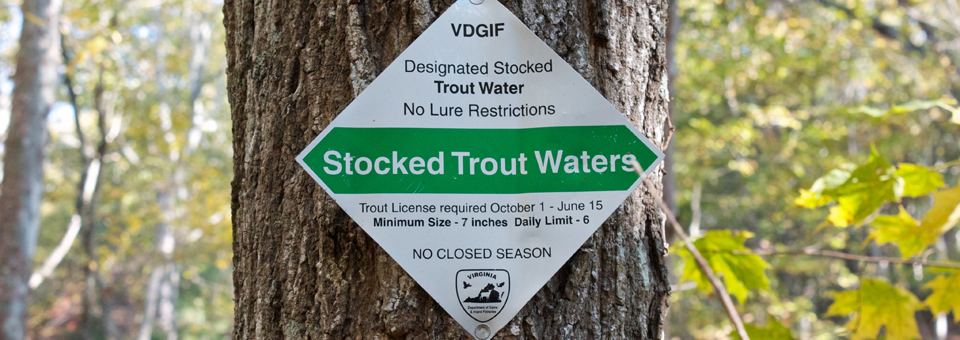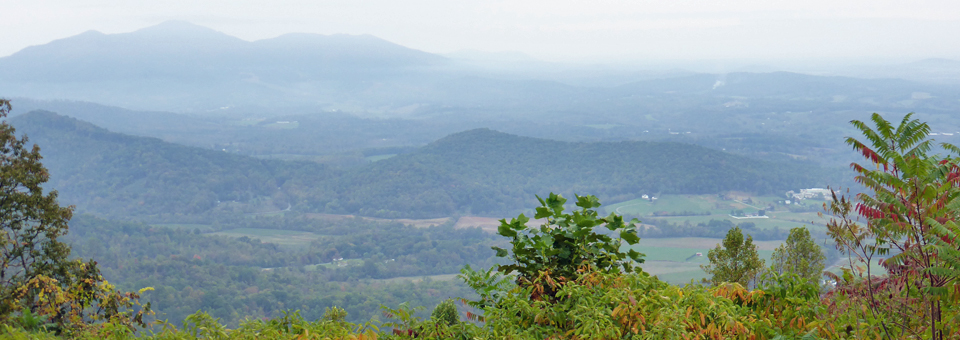A week in Virginia’s Blue Ridge
The 469 mile drive along the Blue Ridge Parkway is one of America’s most scenic road trips. This mountaintop roadway provides scenic trails and vistas from Virginia’s Shenandoah National Park to Smoky Mountain National Park in North Carolina and Tennessee. It also runs through a region of cities and towns rich in historical, cultural, and culinary experiences.
This time we traveled the section in southwestern Virginia north and south of Roanoke. We took the time to explore country roads and waterways, enjoy city attractions, hike some trails, visit unique museums, mosey around small towns, sip local wine, and savor southern cooking.
Points of interest are easy to find thanks to concrete mileposts along the Parkway.
A little history of the area…
The topography of this mountainous region shaped the nation’s development. Settlements sprung up around waterways frequented by abundant animal life that lived in the tree covered mountainsides. Eighteenth century pioneers in covered wagons traveled west through mountain passes with names like the Great Wagon Road in Virginia’s Shenandoah Valley and the Wilderness Trail in the Roanoke Gap and towns sprung up along the way.
Meriwether Lewis and William Clark left from Fincastle to explore the Louisiana Purchase. They were commissioned by Thomas Jefferson, who built a nearby retreat, Poplar Forest, on a plantation inherited from his father-in-law. William Clark returned to marry a woman from Fincastle, which has been named a Lewis and Clark Community.
Big Lick was named for the salt marshes where animals gathered and Native Americans hunted. This stagecoach stop and postal station relocated closer to the tracks when the railway came in 1852 and soon became a boom town.
Coal was hauled from West Virginia and Big Lick became a supply center during the Civil War. In the early 1880s, Big Lick was renamed Roanoke, a version of the Native American word for shell beads used as currency.
The Norfolk and Western Railway built the grand Hotel Roanoke in 1882.
The city roared into the early 20th century railroad boom with its machine shops and foundry, manufacturing steam locomotives admired throughout the industry.
Thousands were employed designing, building, and maintaining the A, J, and Y6 class locomotives until 1953, when other North American railroads had already converted to diesel-electric.
Rapid growth brought developments that were, at times, controversial.
In 1907 the Women’s Civic Betterment Club hired an urban designer to make one of the nation’s first city plans for this burgeoning urban area, transforming this boom town into what is now the Capital of the Blue Ridge and the largest city in Southwest Virginia.
Roanoke today
Roanoke is a good base for exploring the Blue Ridge Parkway to the north and south.
It has a walkable downtown area with unique shops, eateries, and museums.
Its downtown hub includes the historic City Market and the multi-cultural complex, Center on the Square, which opened in May 2013 after renovations and innovations.
It houses the interactive Science Museum of Western Virginia, the History Museum of Western Virginia, the Harrison Museum of African American Culture, and the Mill Mountain Theater.
Roanoke is called the Star City of the South for the 100’ illuminated star on Mill Mountain. Erected to attract holiday shoppers, it was too large to store, and remained to become a symbol of the city and National Historic Site. An overlook by the star provides a bird’s-eye view of the city.
This National Railway Heritage District has two museums that celebrate its locomotives. The O.Winston Link Museum is in the former Norfolk and Western Passenger Station alongside the Roanoke Valley Convention & Visitors Bureau. It features Link’s 1950s black and white photographs and sound recordings of the last of the mighty steam powered locomotives.
Each element of civil engineer and photographer O. Winston Link’s photographs was staged to tell a story of the locomotives he so admired and communities centered on the railroad.
A half-mile Railwalk bordered by railroad displays connects the Link Museum to the Virginia Museum of Transportation, which is in the historic Norfolk and Western Railway Freight Station.
The museum’s showpieces are two Norfolk & Western Railway steam locomotives –the powerful Class A 1218 for freight and the streamlined passenger Class J 611, the fastest coal fired steam engine in America.
The Class A 1218, built in a record-breaking two weeks, pulled coal trains from 1943 to 1959 and is featured in O. Winston Link’s photographs.
Jefferson Center’s nationally recognized Opera Roanoke features some of the finest singers in the opera world.
Taubman Museum of Art’s extensive collection is in a standout undulating futuristic style building built to reflect the area’s industry and topography. Admission is free.
The Hotel Roanoke is on the National Register of Historic Places…
…and features marble floors, elegant chandeliers, antique lobby furnishings, and frescoes.
Its signature peanut soup and spoonbread, served in the elegant Regency Room, is legendary.
The hotel was given to Virginia Tech, and its Hokies football team stays here the Friday before home games. The Hotel Roanoke also serves as headquarters for the Miss Virginia pageant.
Beyond the City
To learn about the Blue Ridge Parkway and its history, stop at the 1100 acre Explore Park at milestone 115 to see the Visitor Center’s film and exhibits.
There are hiking and biking trails and a one-mile interpretive trail.
In the 1800s, the Johnson family made brandy from farm apples. Peaks of Otter Winery at Johnson Orchards now makes Fruit of the Farm wines with names like Pumpkin Pie, Apple Truffle, and “Kiss the Devil” chili pepper. Stop by for some local flavor.
Mabry Mill, milepost 176.1, is one of the most photographed spots along the Blue Ridge Parkway. There’s living history at the restored pioneer grist mill, sawmill, woodworking shop, and blacksmith shop.
The Blue Ridge Institute and Museum at Ferrum College is along the Crooked Road.
The Blue Ridge Farm Museum and annual Blue Ridge Folklife Festival are located here.
It chronicles folkways of the people in and around the Blue Ridge Mountains and is the official State Center for Blue Ridge Folklore.
Rent a boat at Bridgewater Marina on Smith Mountain Lake,known as the Jewel of the Blue Ridge Mountains.
Round out the day with a stop at the 3400 square foot Artisan Center on the Crooked Road in Rocky Mount to browse the work of local artists and authors.
Learn about one of America’s most prominent African-American educators, authors, and orators at the Booker T. Washington National Monument on the plantation in Moneta where he lived his first nine years as a slave.
Freed after the Civil War, he went on to found Tuskeegee Institute and advise Presidents Roosevelt and Taft.
The Franklin County Historical Society Museum is a repository of the area’s past…
including its Confederate history…
…and Franklin County’s reutation as the Moonshine Capital of the World.
There’s a full-size still out back for describing the “likker-making” that made
Lanes Rakes, one of the builders of this replica moonshine likker still, Franklin County Historical Society Museum
Bedford suffered the nation’s greatest per capita losses during the World War II Normandy invasion and was chosen by Congress as the site of the National D-Day Memorial.
Nineteen of the thrifty-four men from this community of 3200 were killed that day, four more died later.
For accommodations surrounded by the forest and mountain air, there’s lodging at Peaks of Otter Lodge, at milepost 86 of the Blue Ridge Parkway. An $8 round trip shuttle is available for those who prefer riding to climbing up the nearby 3862’ Sharp Top Mountain.
There’s small town charm on Main Street in Salem. Shop for fruits and veggies, jams and jellies, baked goods and crafts at the Farmer’s Market. The Salem Museum, in the historic Wilderness-Brown House, is on the Wilderness Road for pioneers heading west.
Sip a Lime Rickey at the vintage soda fountain at POP’s Ice Cream and Soda, in Roanoke’s Grandin Village, 2 miles from downtown. Visit the restored 1930s movie theater, browse the vintage books at Too Many Books, and hunt for architectural treasures at the 40,000 square foot Black Dog Salvage.
Good eatin’ and fine dining
The Historic Roanoke City Market is a popular spot for a quick meal.
Why would a City Market restaurant feature a “Green Monstah” special,a reference the left field wall at Boston’s Fenway Park?
The Boston Red Sox’ local minor league team, the Salem Red Sox, is nearby.
For local flavor grab a stool at the nearby Texas Tavern for favorites like the cheesy western sandwich ($2.45).
It’s comfort food made from scratch at the Roanoker, on Colonial Avenue, named one of Virginia’s best breakfast spots by Southern Living Magazine.
The light and fluffy buttermilk biscuits are the best around.
The Homeplace Restaurant in Catawba is in a 1907 farmhouse on 150 acres in the mountains.
Porch swings and rockers and a sprawling lawn where children play ease the wait for a table.
If you are lucky, there might be live musical entertainment.
It’s all-you-can-eat family-style southern comfort food including fried chicken, country ham, mashed potatoes, buttermilk biscuits, gravy, apple butter, home cooked vegetables, and ice cream topped cobbler.
Thursday through Sunday dinner is $14, add another meat for $1.
For rustic southern elegance with spectacular scenery, visit Chateau Morrisette Winery, at milepost 171.5 in Floyd, and sample their Black Dog wines.
Try specialties like the cinnamon chili rubbed pork tenderloin with apricot-orange glaze, collard greens, and bacon rice pilaf ($15) in the Old World-style Chateau Restaurant.
Packages are offered with lodging partners. Special events include the Black Dog Music Festival.
The Floyd Country Store is an entertaining stop for shopping, ice cream, or lunch.
Bluegrass and old time mountain music by local and visiting musicians, food, and dancing can be enjoyed at the Friday night jamboree.
Floyd is part of the Crooked Road, Virginia’s Heritage Music Trail, and is known for the annual Floydfest Music Festival.
Put together a great meal to enjoy at one of the picnic areas from what you find at the area’s apple orchards, wineries, country stores and creameries. And don’t forget the Virginia peanuts.
Virginia apples and other fruits, preserves and pickled goods are available in places like the fifth-generation family-run Ikenberry Orchards in Daleville.
Homestead Creamery in Wirtz is the local choice for the discernibly fresher taste of its high-quality old-fashioned, all-natural, high butterfat dairy products like milk, ice cream, custards, and butter.
Boar’s Head meats and cheeses are used in their sandwiches and a wide range of Virginia’s foods are sold here.
The Great Outdoors
Woodland trails for all ability are part of the outdoor experience.
An energetic hike to the overhanging rock known as McAfee Knob, at milepost 169, leads to a nearly 270 ∘view of the valley . It is one of the Appalachian Trail’s most photographed areas.
Roaring Run Furnace, a remnant of a 19th century iron industry that is on the National Register of Historic Places.
It is at the beginning of a trail along cascading water to the picturesque Roaring Run Falls.
Trout fishing in Roaring Run Creek is said to be some of the best around. The headwaters of the James River are renowned for fishing and canoeing.
There are many scenic overlooks, so you needn’t be an outdoor adventurer to enjoy the idyllic countryside.
Come on down!
Enjoy a world-class opera or a bluegrass country jamboree, sample Appalachian appellations or farm-fresh milk, savor elegant Southern specialties or comfort food, learn a little history, hike some trails or just enjoy the view.
It’s all there along the Blue Ridge Parkway.
And don’t forget:
For more information go the Roanoke Valley Convention and Visitors Bureau
For questions on accessibility for those with physical challenges call park headquarters at (828) 271-4779.


